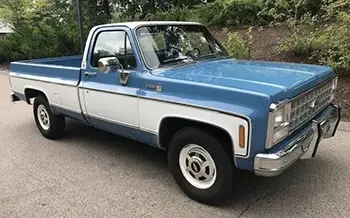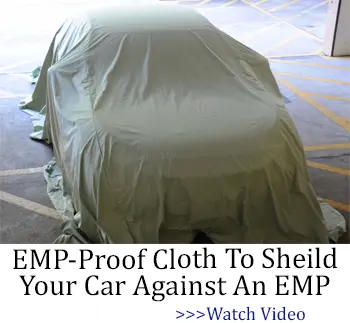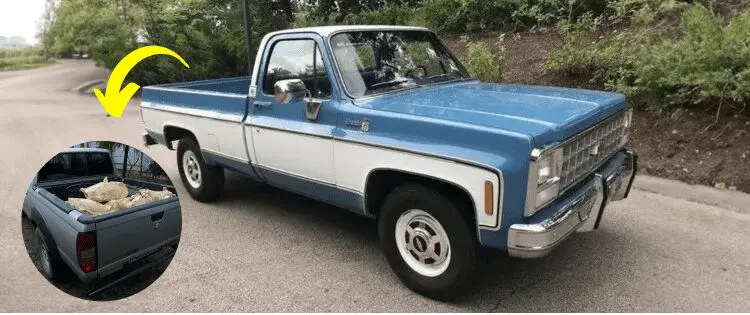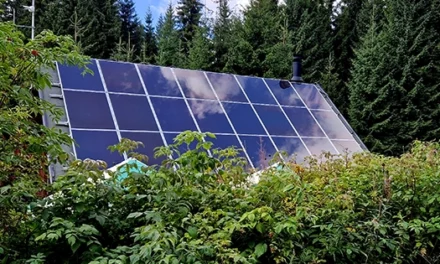Americans are a mobile people. Whether it’s for family, work, or just the love of travel, we’re always on the move. For those concerned about staying prepared, an EMP-proof truck can offer a reliable way to maintain mobility even in challenging situations.
The road trip is an American thing; other countries just don’t do it. We love our cars – suburbs, and even whole cities, are often close to impossible to get around without driving. As a nation, we love being able to just jump in our cars, start the engine and go.
Now imagine we’re the target of an EMP attack. An event like this is going to be a disaster in so many ways it’s hard to keep track. Our homes will go dark. The communications networks we’ve come to rely on so heavily will shut down instantly.
All our modern appliances will become useless. And, maybe worst of all, our cars will be immobilized as the surge of electromagnetic energy fries the chips in their engine management computers.
Related: US Nuclear Target Map
If you’re moving on foot with all the gear you need to survive, you won’t be traveling fast. Depending on the terrain and weather you might manage 20 miles a day – or you might manage ten. Even then there’s a limit to how much you can carry.
In summer you can manage with light camping gear but in winter, when you need protection from the elements as well as food, water, and weapons, the weight will mount up rapidly.
More weight, of course, means you can’t move as quickly so your journey will take longer, which means you need more food, which means you’re carrying more weight, which means you can’t move as quickly…
You Need Transport
In a crisis, having a vehicle can dramatically improve your chances of survival. With a reliable truck or car, you can quickly cover ground to escape fires, contamination, or extreme weather. Plus, you’ll have the space to load up all the gear you need and head to your bug-out location without delay.
Additionally, scavenging and foraging become much easier when you have a vehicle to transport your haul. But the big question remains—can you rely on your vehicle to keep running after an EMP attack?
The answer is yes. An EMP-proof truck offers a practical solution, ensuring mobility even in the worst scenarios. Even better, some modern vehicles might survive an EMP without permanent damage. If a car isn’t running during the attack, there’s a good chance it will remain unaffected. However, keep in mind that the more advanced the vehicle’s electronics, the lower that chance becomes.
Related: Items You Should Have In Case Of An Emergency
Vehicles that are running when an EMP hits are much more likely to have their electronics fried – or, even worse, be written off in a crash when the electronics temporarily shut down. You’re a lot safer in an older vehicle with simpler, more EMP-resistant systems.
What kind of vehicle should you look for? That’s simple – you want a truck.
In a crisis, any vehicle is better than nothing, but a good, reliable truck is the best option. Up front, you get the comfort of a car, but the truck bed can haul a much bigger load than any car.
Whether you’re heading for your BOL with all you can carry, collecting firewood, or on a foraging trip, that extra cargo capacity can make a huge difference. Trucks also tend to be tougher and simpler to maintain, and usually have better off-road capability than a car – all reasons why they’re ideal survival vehicles.
Choosing An EMP-Proof Truck
You don’t want just any truck, though. To ensure EMP resistance, choosing an older model is your best bet.
Modern trucks rely on advanced engines with computerized management systems, which makes them vulnerable to an EMP pulse. In fact, they’re just as likely to be immobilized by a pulse as a standard car.
While they might survive the pulse, do you really want to risk your survival on that possibility? Older trucks, on the other hand, offer a much better chance of staying operational after an EMP.
So, how old does your truck need to be? The good news is that you don’t have to go too far back in time to find a vehicle that’s reliable in an EMP environment.
In 2001, the USA established an EMP Commission to study this threat. By 2002, the Commission tested 50 vehicles manufactured between 1987 and 2002. Each vehicle was exposed to a series of EMPs with an intensity of up to 50kV/m. This study highlights how selecting the right older model can lead to an effective EMP-proof truck, ensuring mobility even in extreme conditions.
Related: Crucial Items to Stockpile for Winter
For comparison, the 1962 Starfish Prime EMP test knocked out streetlamps in Hawaii 900 miles away; the pulse that hit Hawaii was about 5.6kV/m.
The same 1.6-megaton weapon detonated over the continental US would have produced a 22-30kV/m pulse, so those vehicles were exposed to almost double the pulse that would be created by a very large EMP warhead. What happened to them?
Mostly nothing.
Out of the 50 vehicles tested, 47 kept running even when exposed to the powerful 50kV/m pulse. Two others managed to restart immediately, leaving only one completely disabled. 
That doesn’t mean the rest escaped unscathed, though. Many experienced “nuisance” problems like malfunctioning warning lights or damaged radios. However, they still ran, proving their resilience. This suggests that if you choose a truck built before 2002, it will probably handle an EMP attack just fine.
But why is that? The metal bodywork of most vehicles acts as a natural Faraday cage, shielding the electronics inside from EMP damage.
Related: 10 Things To Have Ready Before An EMP
Even with the surprising EMP resistance of fuel-injected, computer-managed engines tested in 2002, older models offer even stronger protection. For the best chances of survival, prioritize a carbureted engine.
Trucks built before 1987, which commonly feature carbureted engines, are virtually immune to EMP effects. If you’re serious about preparedness, an older truck could be the perfect EMP-proof truck.
However, there’s a trade-off to consider. While pre-1987 models excel at resisting EMP damage, their age means they’re more prone to mechanical failures. To ensure reliability, choose a well-maintained truck in excellent condition. Without proper upkeep, you might end up with a vehicle that’s EMP-proof but unreliable when you need it most.
Improving EMP Resistance
Even if a pre-2002 vehicle is pretty resistant to EMP already, there’s still a risk of it suffering damage short of actually being immobilized – especially those “nuisance” problems that can actually be quite serious.
If you’re driving cross-country in the dark, for example, you’d probably quite like it if your lights were working. The good news is there are various ways to protect your truck and its systems against the effects of the pulse.
You can protect individual systems, like rear screen heaters – which are important in winter – by adding a gas surge tube (also known as a gas discharge tube) across the circuit.
When the system is running normally, the surge tube doesn’t do anything; if an EMP hits, though, the extra current it generates is diverted through the tube and dissipated harmlessly, instead of burning out your truck’s systems.
Related: This Is How An EMP Will Ruin Your Stockpile
You can also get a specialized EMP-proof cloth that will protect all your vehicle’s systems, or even your home’s. This cloth was developed after years of extensive research by top U.S. scientists and it provides 98% military-grade protection against electromagnetic waves.
Finally, don’t forget the most vulnerable part of any EMP-proof truck – the fuel supply. Your 2001 truck might survive an EMP, but the gas station pumps likely won’t. If the pumps themselves aren’t destroyed, the power to run them will almost certainly be out.
That’s why it’s crucial to have a good stockpile of safely stored fuel if you plan to keep your vehicle running after an EMP attack. If you choose a diesel-powered EMP-proof truck, you gain an additional advantage – it can run on cooking oil. This flexibility is worth considering for long-term preparedness.
Related: 7 Powerless Items You’ll Need After An EMP
Additionally, think about equipping your EMP-proof truck with a small pump and some hose. Combined with a pry bar, this setup can help you access fuel directly from a gas station’s storage tanks, even if the pumps are offline. Taking these proactive steps ensures your truck stays ready to roll, no matter the situation.
At the end of the day, any vehicle is better than nothing – but an EMP-proof truck that can be relied on to survive an EMP attack is your best bet.
Look for the oldest truck you can find that’s in good condition, build up a stock of spare parts for it, and keep it well-maintained. Then, when all the modern electronics get wiped out, you’ll still have a reliable way to get around.
This article first appeared here.
You may also like:
In 10 Years You Wish You’d Known This
The Biggest Mistakes You Can Make in a Blackout (Video)
10 Civil War Foods Every Homesteader Should Know And Try
Livestock Animals You Should Start Raising For The Upcoming Economic Crisis



















